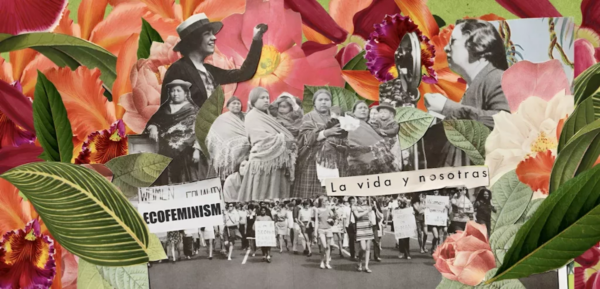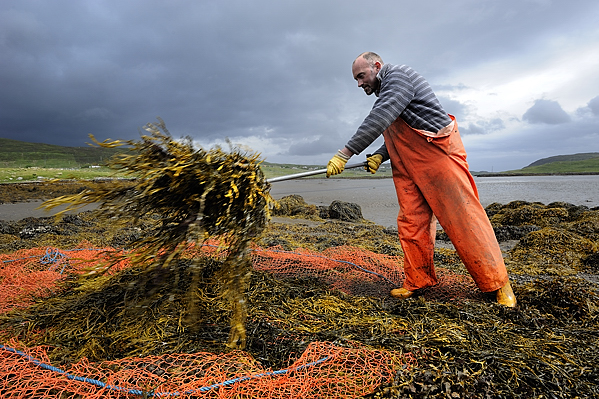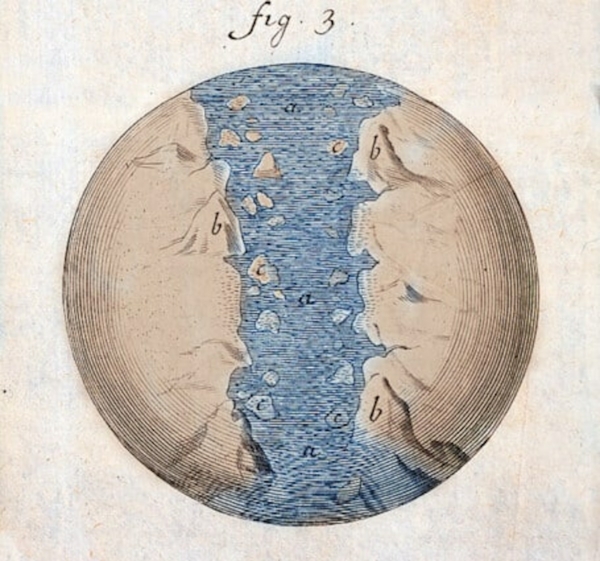
ÉCOFEMMES FEST – MINERVA
L’association MINERVA présentera ÉCOFEMMES FEST, le premier festival en France consacré à l’écoféminisme. Pendant trois jours, artistes, chercheuses, journalistes et…

The train rumbles north. Layers of questions that tugged at me in the build up to my journey, peel away like snake skins, left to flutter in the breeze. With every familiar station name: Newtonmore, Kingussie, Aviemore, the air is changing to Highland air; startling yellow Whin is streaking past, and my body relaxes into the rhythm of the train and the dark murky purple of rocks and bracken, carved into the hillsides.
I have changed train at Perth, and again at Inverness. I have caught a bus west to Ullapool, and now, at the end of a long day’s journey from the Isle of Bute, I sit nestled into the ferry, gliding across a silent sea to Steòrnabhagh (Stornoway) on the Isle of Lewis.
Steòrnabhagh settles prettily around the sheltered harbour, with her castle keeping watch across the bay. Though the fishing fleet is not what it was in its heyday, boats still clank and thud against each other, and the soft plop, plop of water at their sides mixes with a rich, salty sea smell which emanates from wood and decks, and from rope and creels piled high on the wharf.
It is, I believe, a 9th Century town, founded by Vikings under the name of Stjórnavágr. But I welcome correction from those who know more about this than me. It is the largest town in Na h-Eileanan Siar (The Western Isles), with a population of just over 6,000 – about a third of the Isle of Lewis’ population.
The population of the Western Isles is around 27,500 and Gaelic is the first language spoken by most of the islands’ population. This is one reason for my journey here, to Na h-Eileanan Siar, on the first stage of my two artist residencies. Following this, the residencies take me in a sweeping arc across the world to the desert regions of Central Australia.
Working alongside communities from around the globe, Judith has developed her Place Matters series following her own migration from Scotland to Australia, and consequent exploration of issues around displacement.
She works with the mediums of photography, audiovisual, sound and prose examining the relationships between community and place, the importance of cultural identity, and the resulting personal and environmental wellbeing.
“What I see and present can only be what I am shown by the people I meet and I in no way claim to be able to show every side to the stories in the short time I have available to me. But the taking of photographs and recording of sounds do start conversations, as participants reflect on their sense of place. Much comes out of that process well beyond the taking of a photograph or recording of sound. At the same time the process opens a small window for me to learn something more and share the stories further afield.”
L’association MINERVA présentera ÉCOFEMMES FEST, le premier festival en France consacré à l’écoféminisme. Pendant trois jours, artistes, chercheuses, journalistes et…
L’Observatoire de la Côte d’Azur accueille Unda Terræ, une exposition collective art/science imaginée par Circa dans le cadre de la…
L’exposition Enredos II de Nuno da Luz dans laquelle le Centro Botín (Espagne) devient un corps acoustique vibrant à travers…

